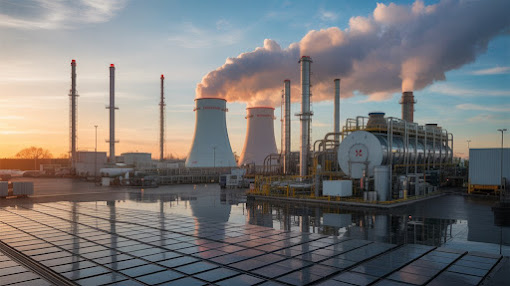Iron & Steel Efficiency Trends 📊⚙️🔥🌱📉 | #phenomenology #researchawards #iron #trending #facts
🔧⚙️ Unlocking Efficiency: A Decade of Iron & Steel Energy Insights in India 🔍🇮🇳
India is marching forward on its decarbonisation path, with the industrial sector at the forefront of energy efficiency efforts. Under the National Mission for Enhanced Energy Efficiency (NMEEE), the country launched its flagship Perform, Achieve, and Trade (PAT) scheme in 2012, aiming to reduce energy intensity across energy-intensive industries. A key pillar of India’s climate commitments, this initiative has garnered attention from global experts, but what has been its real impact? 🔎
A recent plant-level study dives deep into the energy performance of 43 Iron and Steel manufacturers across India from 2009 to 2019, using the decomposed Malmquist Productivity Index (MPI) — a robust tool to assess both productivity and efficiency over time. The findings? Eye-opening, especially for those aiming to drive energy transition in heavy industries. 🏭📉
🔍 Key Findings: Modest Gains, Big Gaps
The study highlights that pure technical efficiency — how well industries convert inputs into outputs without waste — has improved by a mere 2.9% over a decade. This modest gain raises concerns about the effectiveness of current energy-saving initiatives. Even with future energy intensity targets for 2024–25 achieved, only a 4.9% improvement in technical efficiency is projected since 2009. ⚠️
The implications are stark: despite ambitious goals and multiple policy layers, the energy efficiency improvement rate is disappointingly slow. The mean technical efficiency across the 43 plants stands at 79.6%, signaling a latent opportunity: a potential 20% reduction in energy consumption. 🌡️🔋
🚧 Why the Sluggish Progress?
Several reasons may explain the underwhelming pace of progress:
-
Technology Lock-ins 🔒: Many facilities operate on outdated or inflexible technologies that resist modernization.
-
Inadequate Incentives 💸: The market-driven approach may not provide sufficient push for deep retrofits.
-
Data & Monitoring Gaps 📊: Lack of real-time monitoring and data transparency limits targeted interventions.
-
Capacity Constraints 👷♂️: Technological and managerial capabilities in smaller or mid-sized firms may hinder innovation adoption.
🌱 From PAT to Carbon Markets: A New Chapter?
India is now transitioning from energy-efficiency schemes to a more comprehensive Carbon Credit Trading Scheme (CCTS) under the Indian Carbon Market framework. 🏦🌍 This shift aims to provide industries with more flexibility and stronger financial incentives to cut emissions.
For Iron and Steel manufacturers, this presents both a challenge and an opportunity. The sector must now revisit its internal practices, explore cost-effective technological upgrades, and embrace digitalization and data analytics to enhance performance. 📈🖥️
🛠️ What Can Researchers & Technicians Do?
As the sector prepares for this transformation, researchers and technicians have a critical role in bridging the gap between policy, technology, and implementation:
🔬 Conduct Root Cause Analyses
Investigate specific process inefficiencies at the plant level to develop tailored improvement strategies.
📐 Promote Smart Tech Integration
Advocate for and pilot advanced control systems, energy monitoring tools, and automation to optimize operations.
📚 Support Capacity Building
Offer training programs for plant engineers and managers to upgrade their technical skills and awareness.
🔄 Facilitate Tech Transfer
Help scale up successful international best practices in energy optimization across Indian facilities.
📢 Policy Feedback Loops
Provide grounded insights to policymakers to design incentive structures that are both attractive and effective.
💡 Final Thoughts: The Road Ahead
This study serves as a wake-up call for India's Iron and Steel industry and for energy policymakers. While the vision is strong and frameworks are in place, execution must accelerate. There’s a real need to unlock plant-level efficiencies, adopt smarter systems, and drive innovation from the shop floor up. 🧠💡
With the Indian Carbon Market on the horizon and the global climate clock ticking, the time for incrementalism is over. Researchers and technical professionals must lead the charge in transforming India’s Iron and Steel industry into a global model of sustainable industrialization. 🌏⚙️🔋
#energyefficiency #IronAndSteelIndustry #sustainablemanufacturing #decarbonisation #carbonmarket #industrialinnovation #techefficiency #greenindustry #climateaction #carbontrading




Comments
Post a Comment